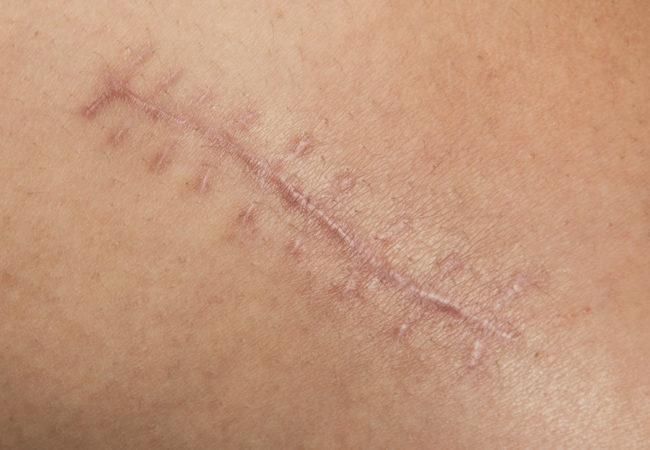Surgical Scar Removal

If you have had an injury to the skin, the possibility of a scar forming is high. While some scars are not noticeable or fade over time, others are obvious and cause distress to the sufferer. Scars are the visible marks which remain once injured tissues have healed. Made up of fibrous tissues which have replaced normal tissues as the wound goes through its natural process of healing there are 3 primary scar types, some of which are more visible than others.
Types Of Scars
- An atrophic scar may look like a dent, hollow or depression in the skin
- A hypertrophic scar is raised beyond the surface of the skin
- A keloid scar is lumpy and has thick tissue that grows past the edge of the wound’s original site
Why Have A Scar Removed?
Although scars are benign and can cause no harm to the health, many people want to get them removed. There are several reasons why people choose to go through surgical scar removal:
- Cosmetic – this is often the primary reason to have a scar removed. Some people feel embarrassed about revealing a scar, whether caused as the result of surgery or an injury, and want to restore their self-confidence by having the scar removed.
- Pain – sometimes, scars can cause pain, and therefore removal is often the best solution to the problem.
- Restricted movement – sometimes, a scar can restrict the movement in a nearby joint. This is especially common in the case of burn scars.
- Discomfort – sometimes a scar can cause problems because of its size, site or appearance and may rub on clothing.
How Does Surgical Scar Removal Work?
Scar removal or scar revision is a procedure which involves removing the scar and reattaching the edges of the skin so that once the new wound has healed the fresh scar will be cosmetically appealing and less obvious.
The healing process of the new wound will depend on the patient’s own health and their skin characteristics. For example, the patient’s well-being and whether or not they suffer from diabetes is a factor to consider as well as the thickness of their skin and their natural skin color. Also, depending on which part of the body is being treated, there may be a greater chance of a scar being formed.
Some areas, such as over the sternum, are more prone to the formation of scars. Also, the skill of the surgeon has a vital role to play in how well the new wound will heal, while the depth, size and complications of the healing process will also have an influence on the shape, size and appearance of the resulting scar after surgery.
Options For Scar Removal
There are a number of different treatments available for scar removing including:
- Dermal fillers for filling depressions under the skin in the case of atrophic scars
- Steroid injections to improve the appearance of keloid and hypertrophic scars
Scar removal that involves surgery means that the scar site will be completely excised and the skin reattached and hidden wherever possible in a natural skin fold or less obvious site.
What To Expect From Scar Removal Surgery
A scar can be surgically excised under local anesthetic. This procedure is totally safe and those who undergo the procedure can get up and walk around immediately following the operation. Depending on the site, shape and size of the scar, the operation should only take about an hour. Afterwards, there is some pain, bruising, swelling and discomfort around the area to be expected for around 48 hours following the procedure. Some patients may rarely have complications like infection and bleeding.
